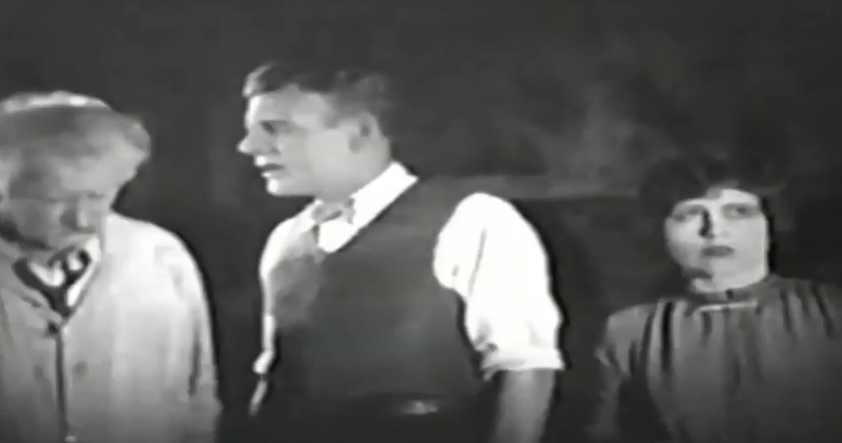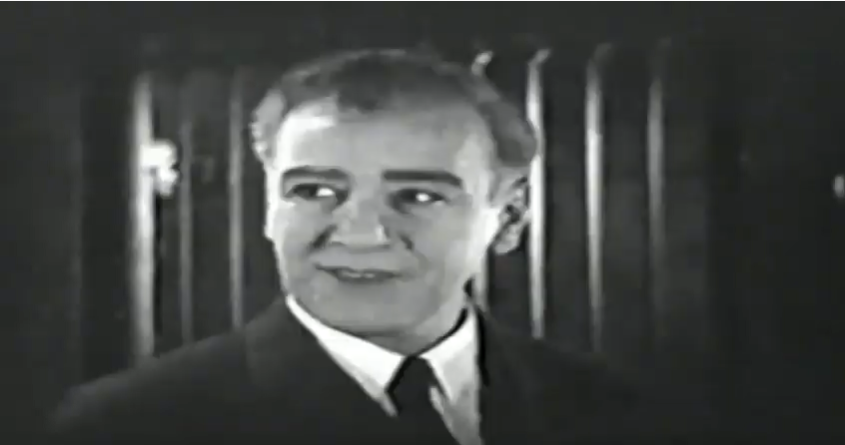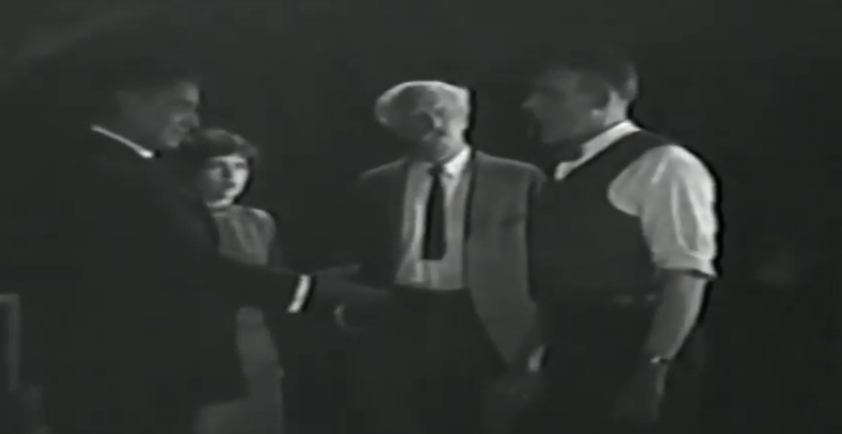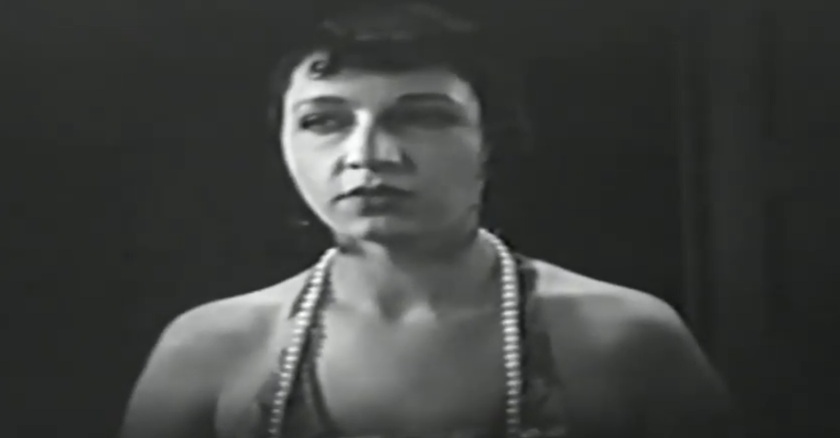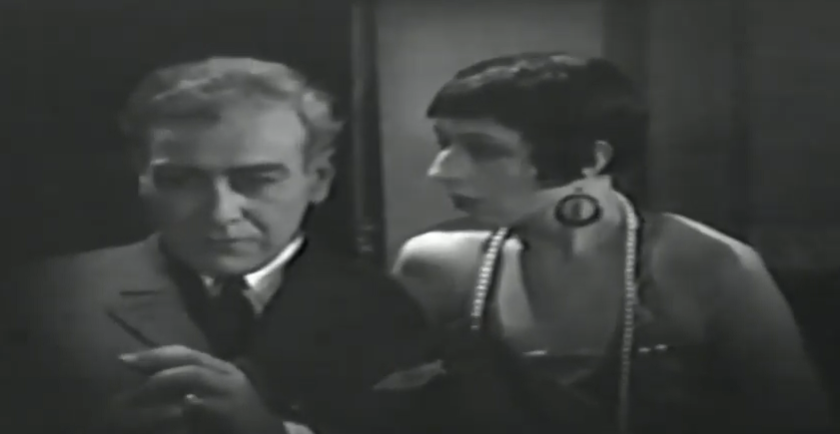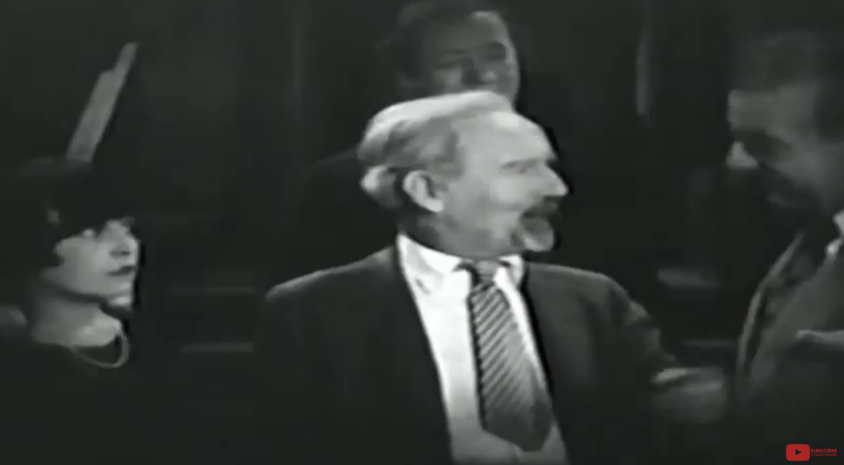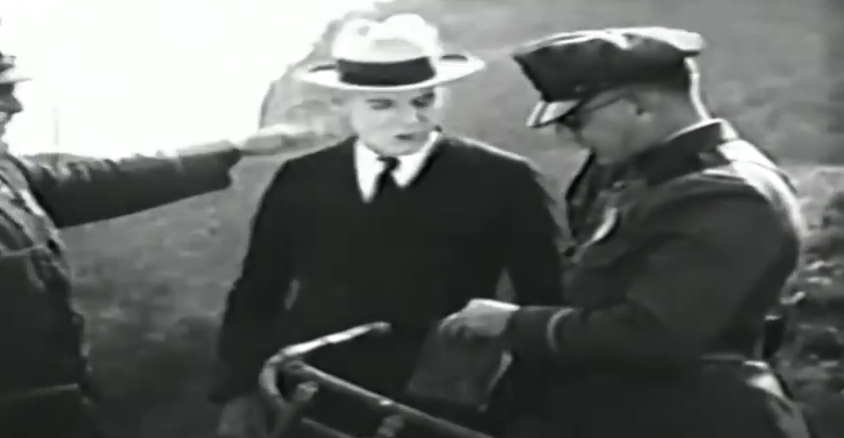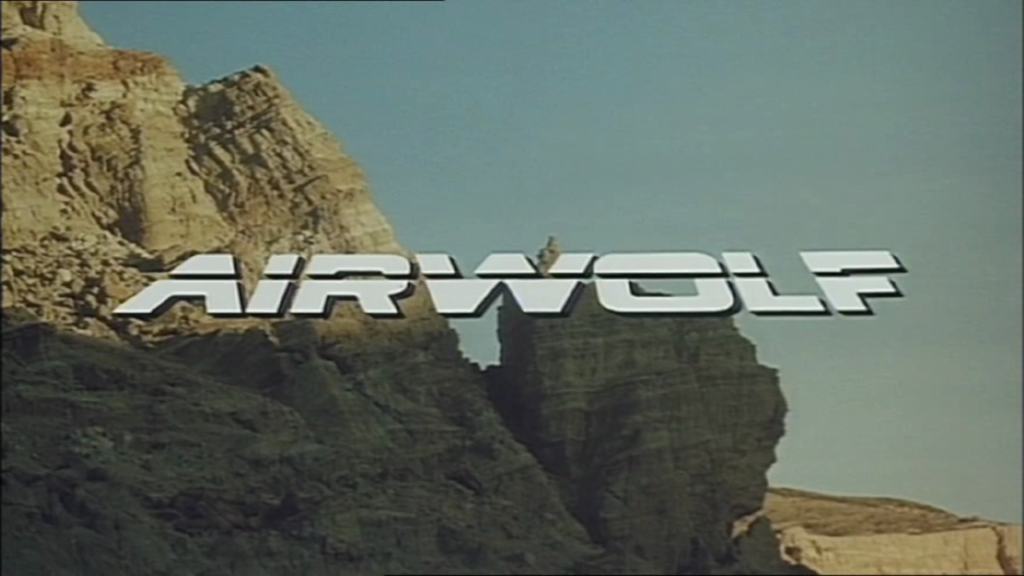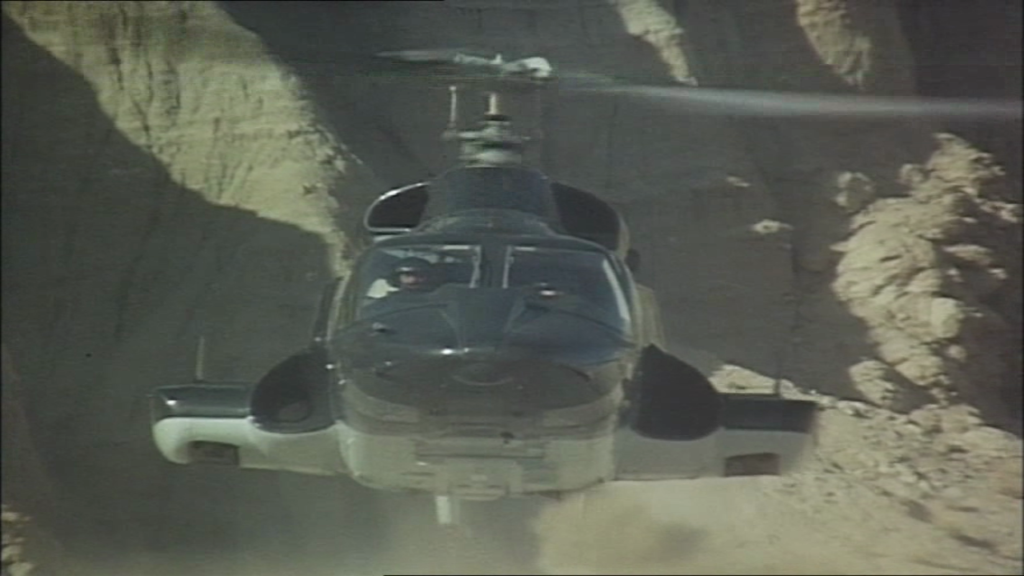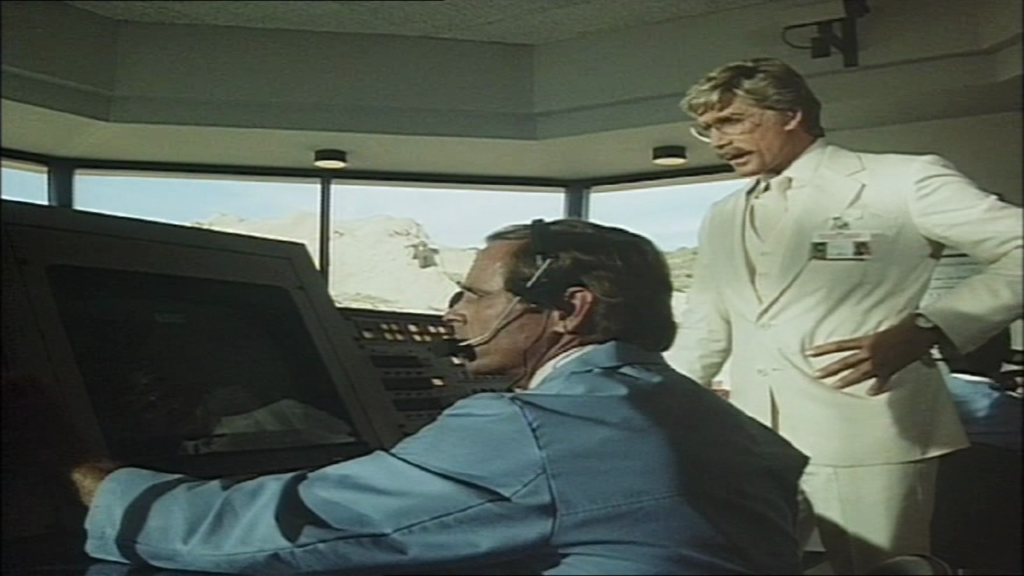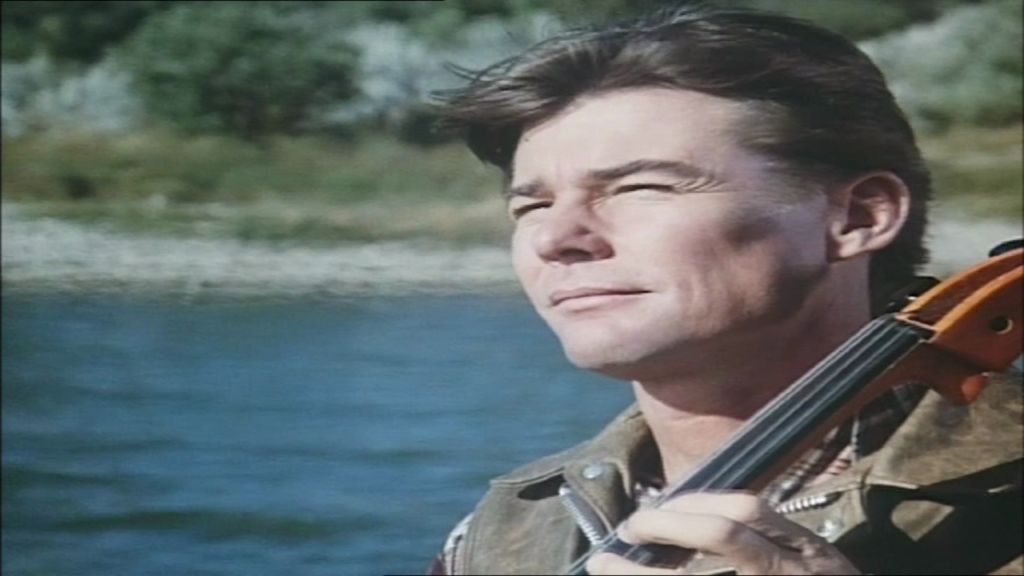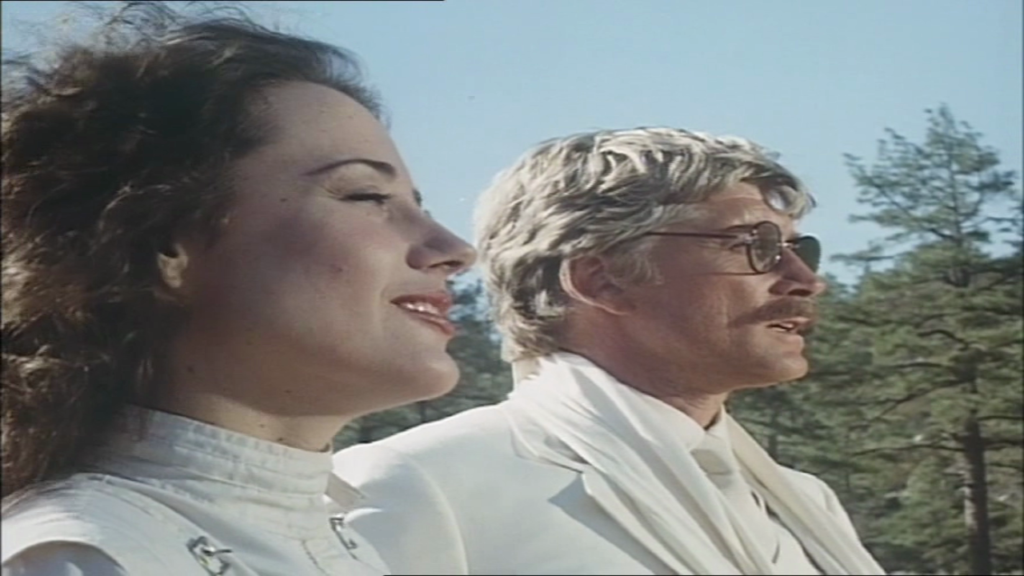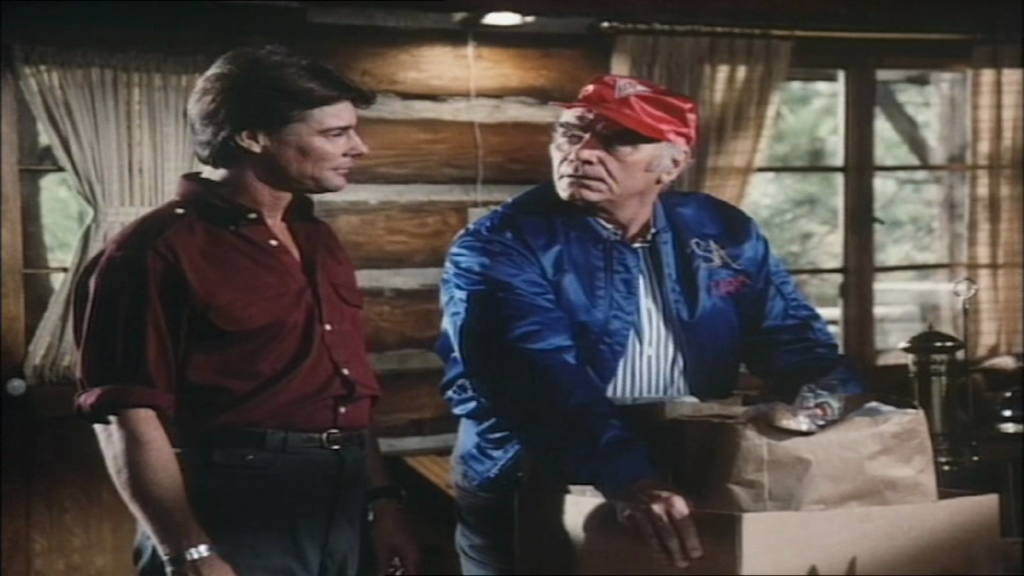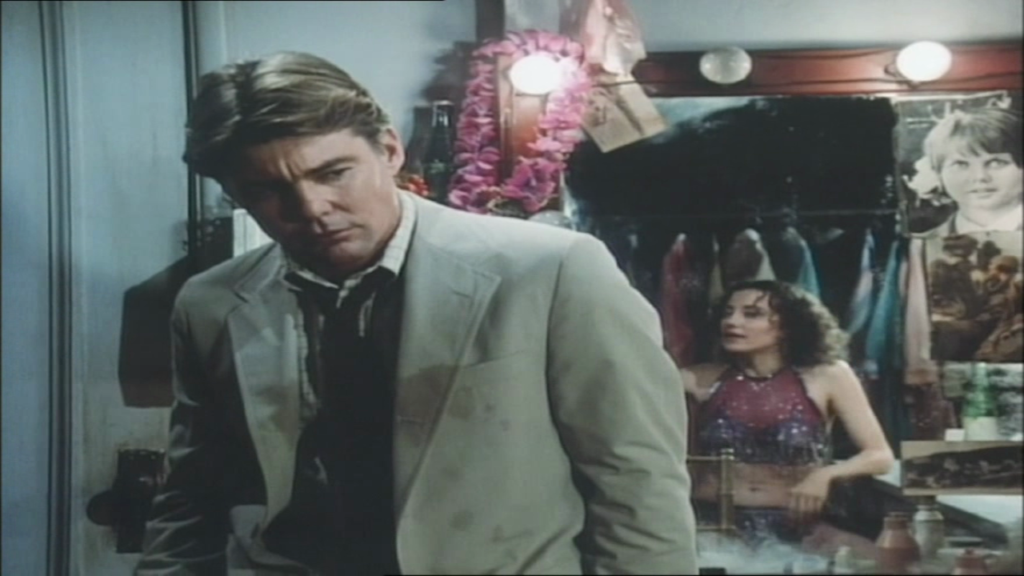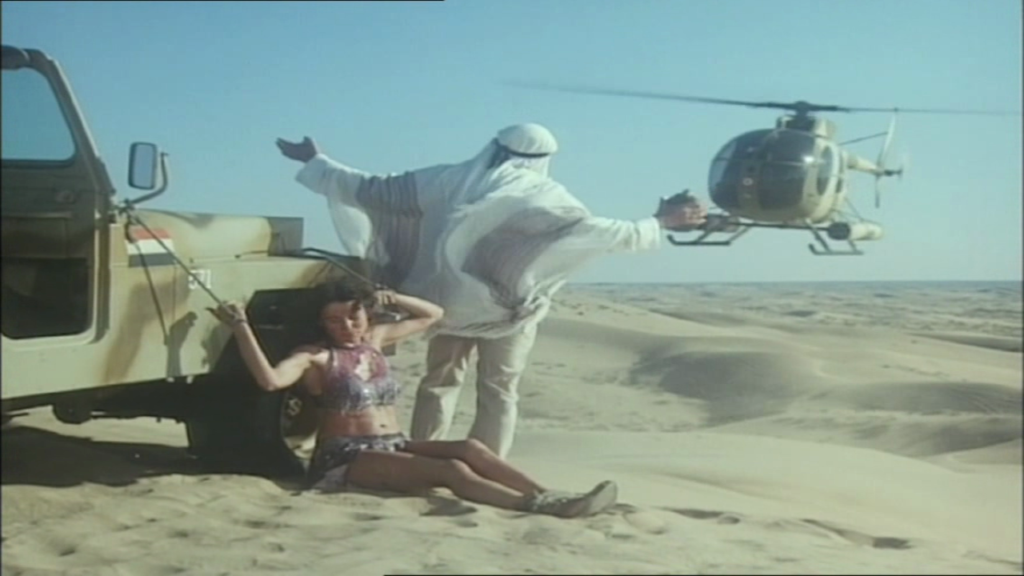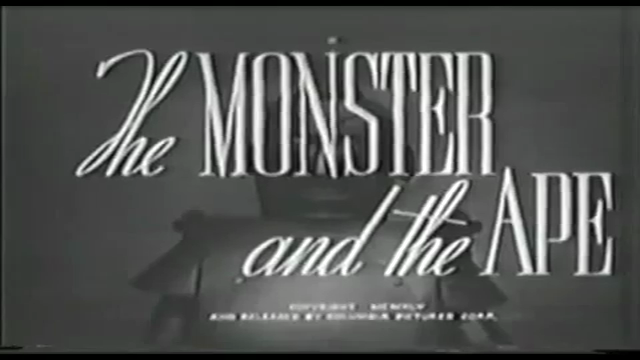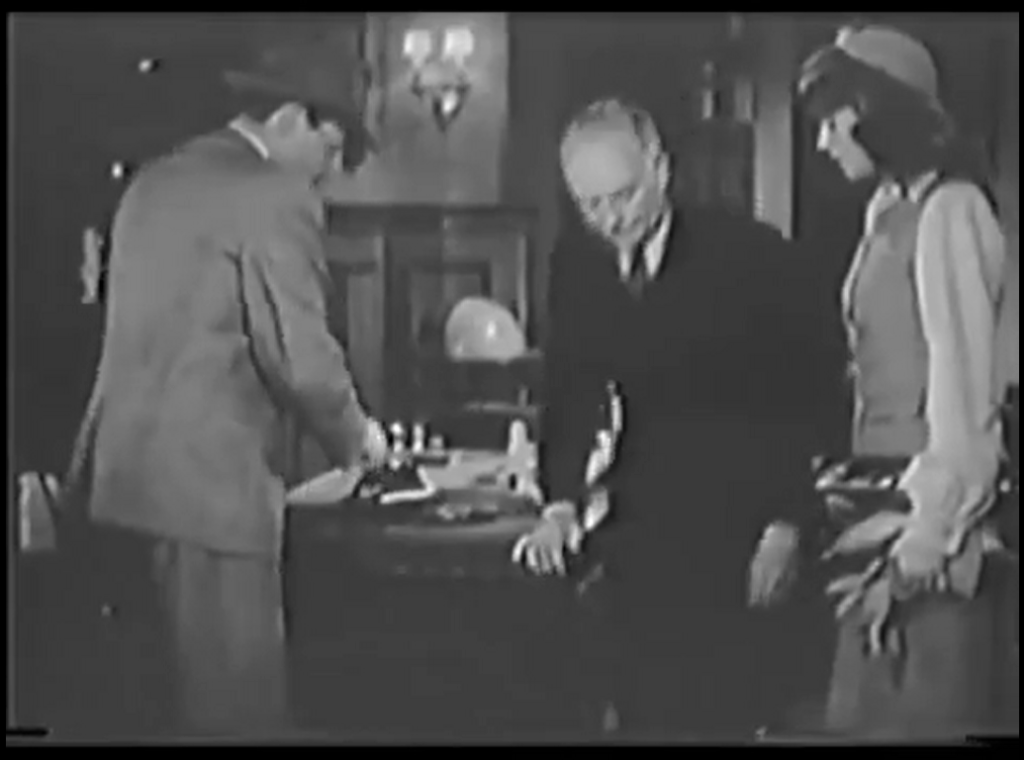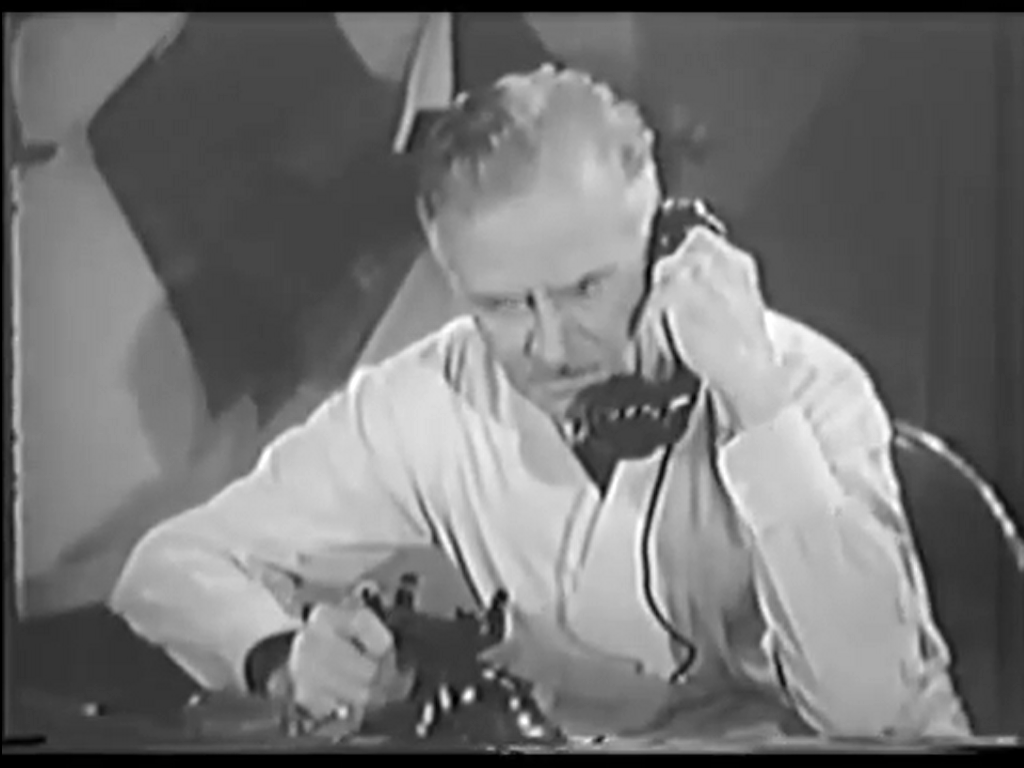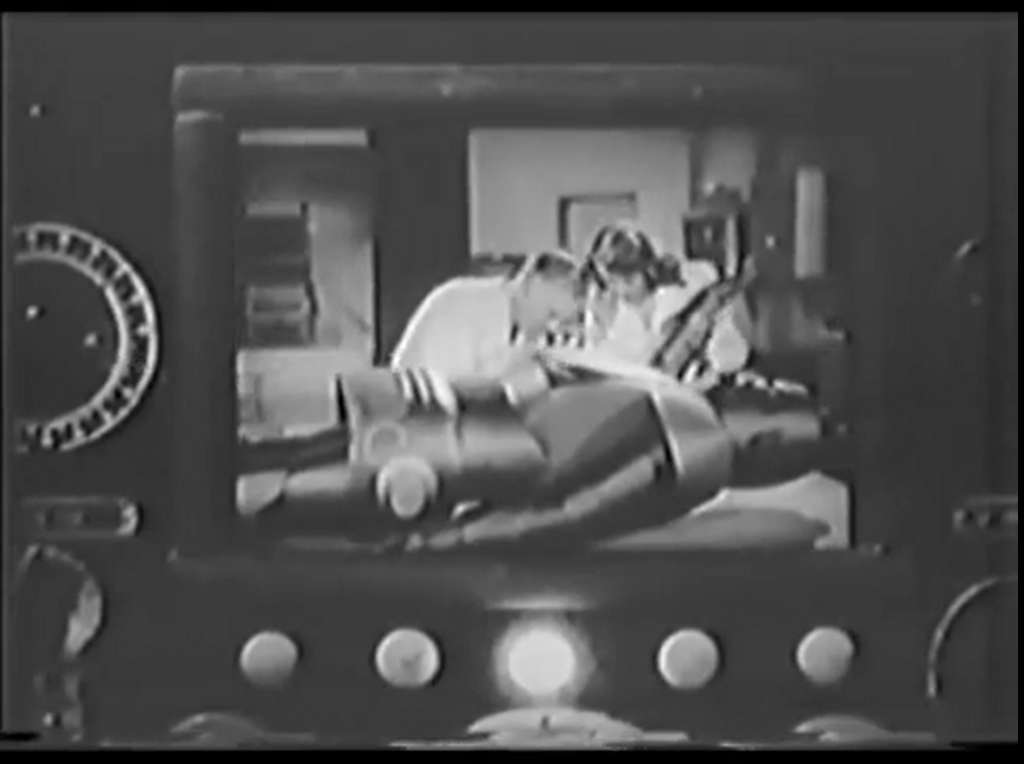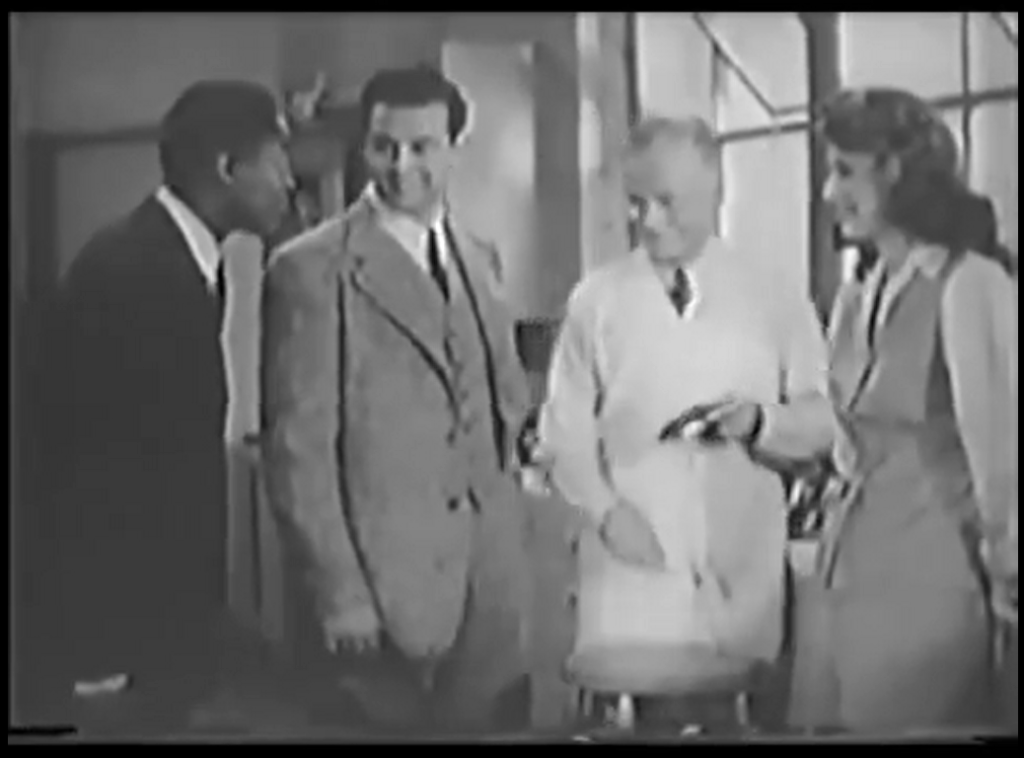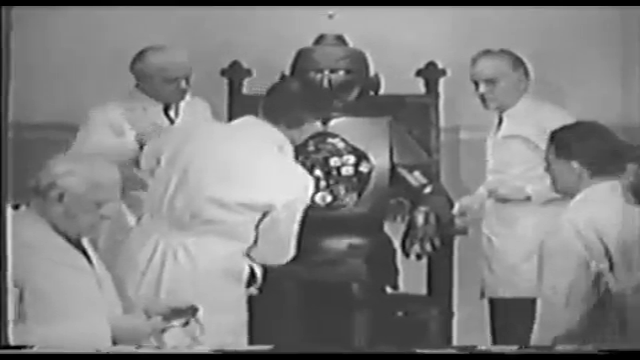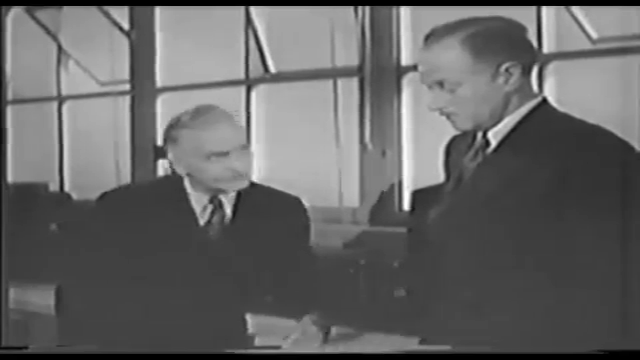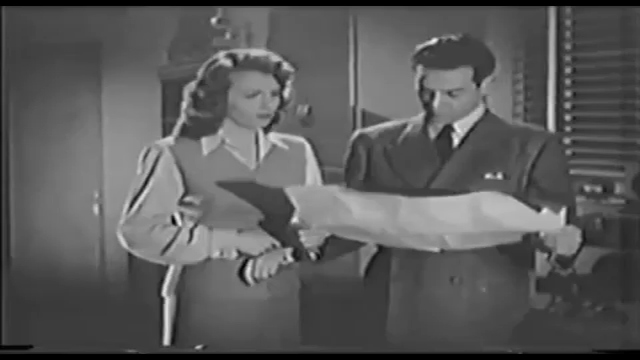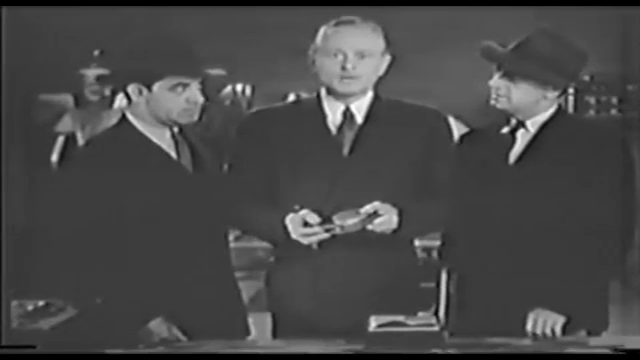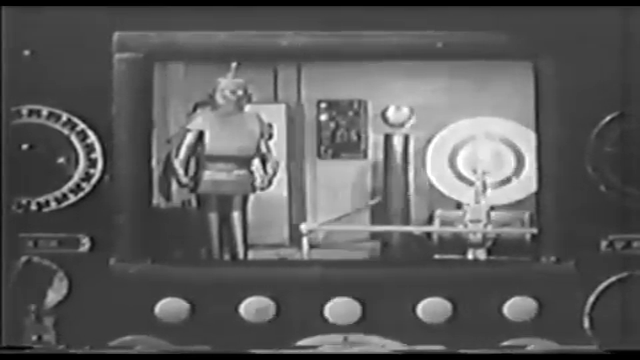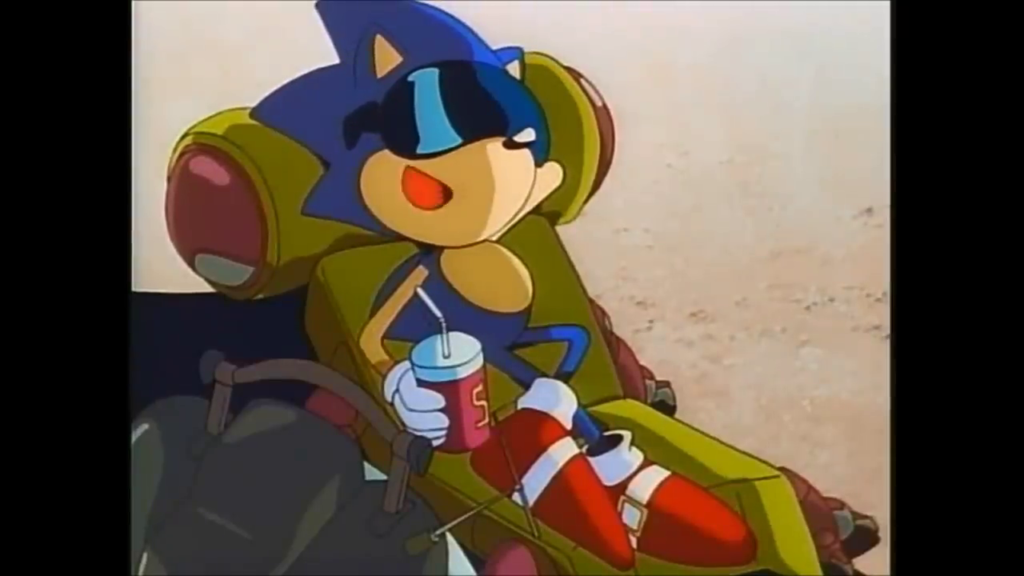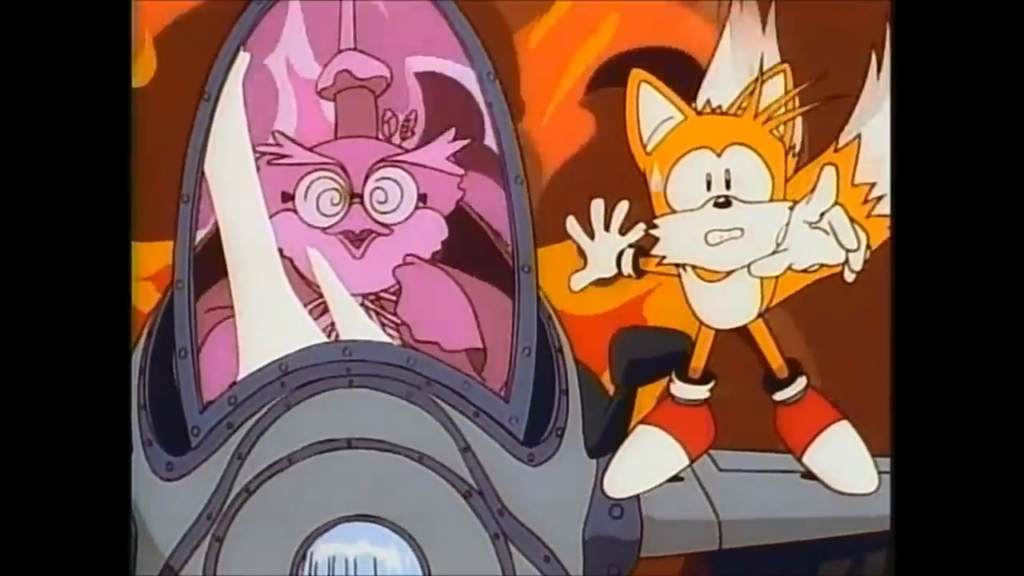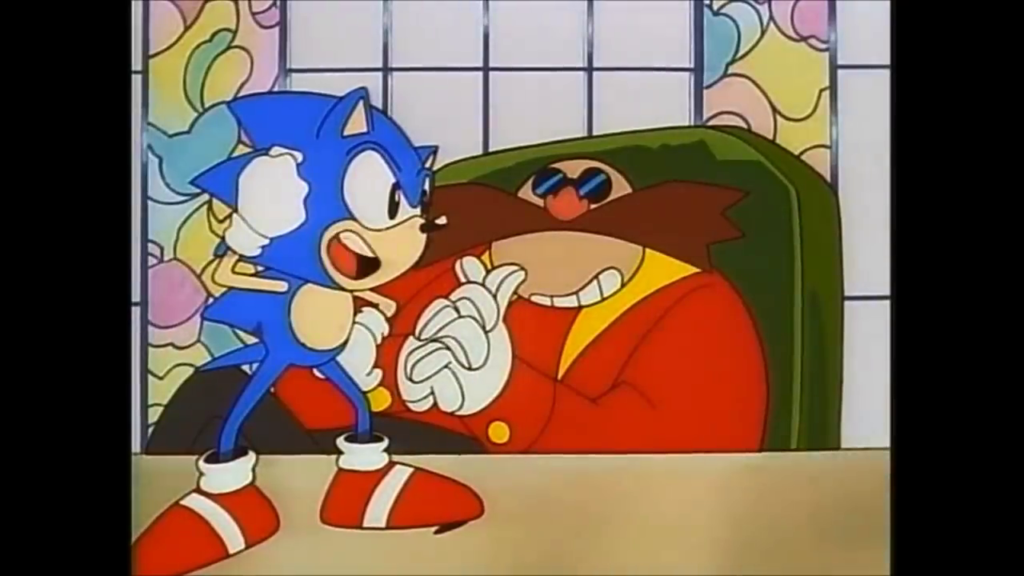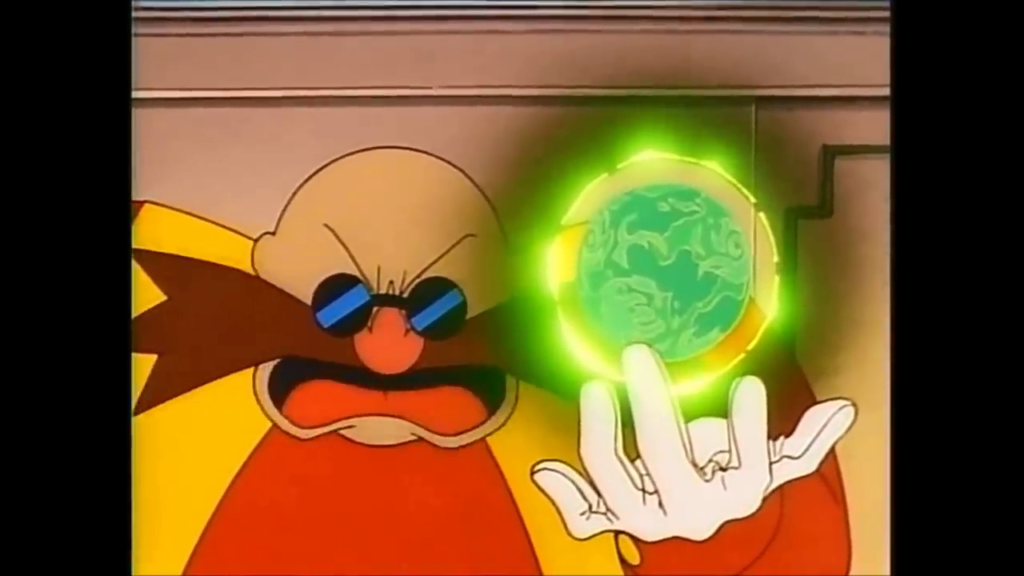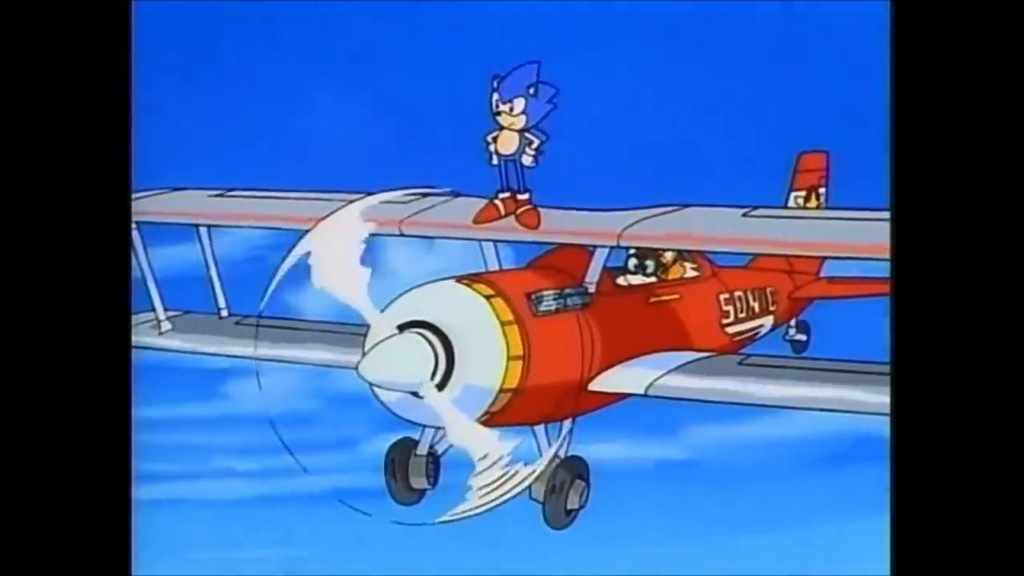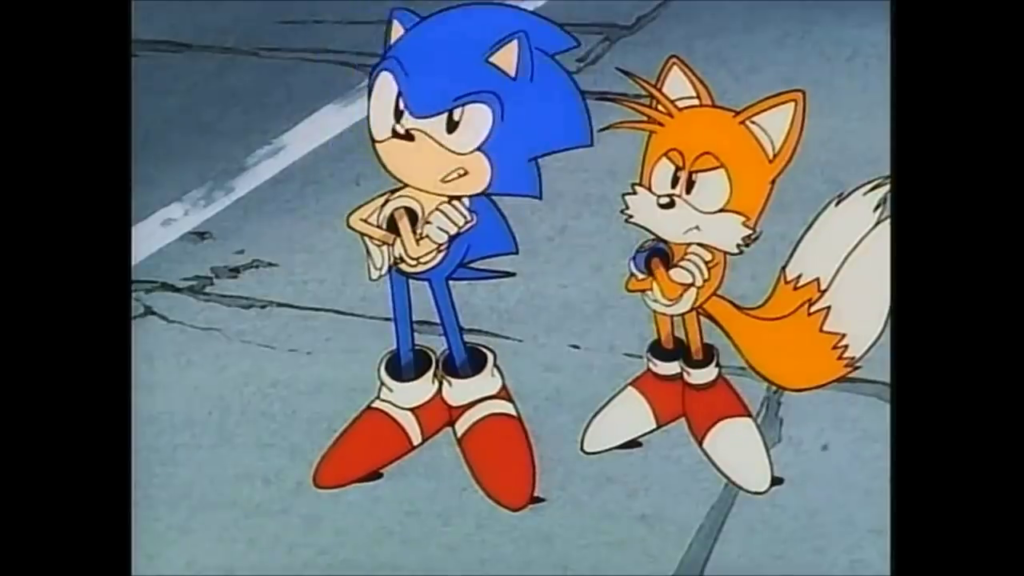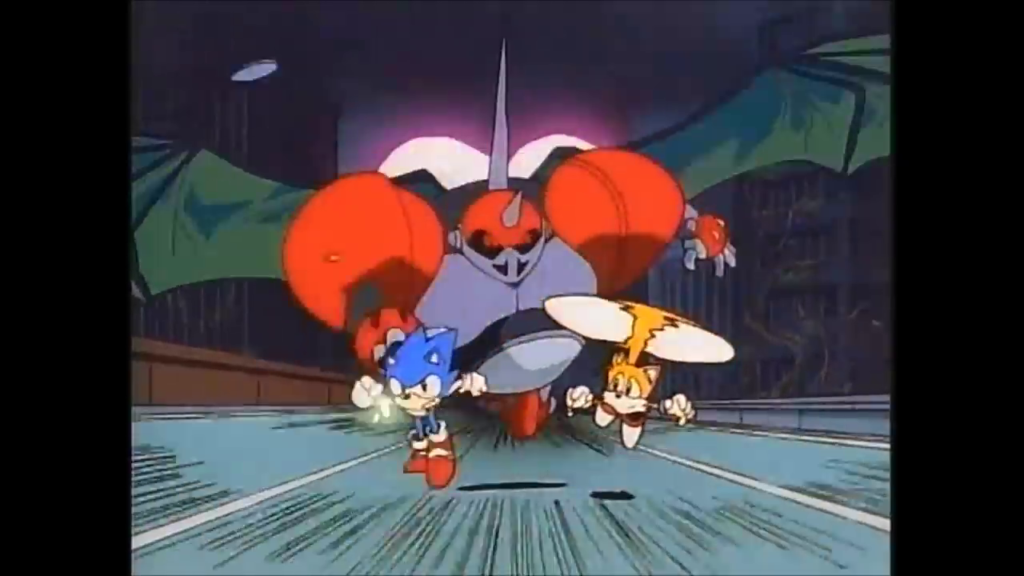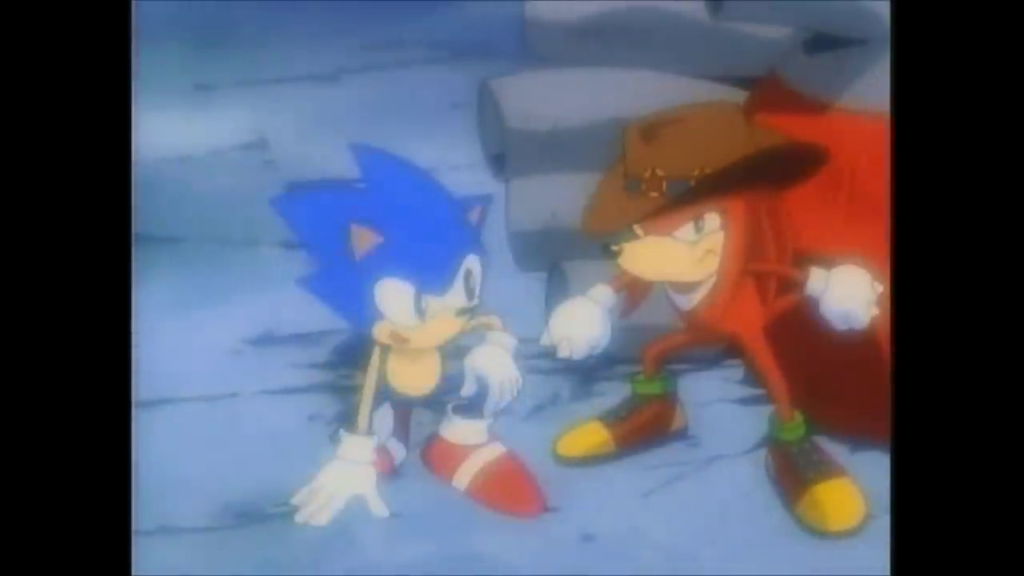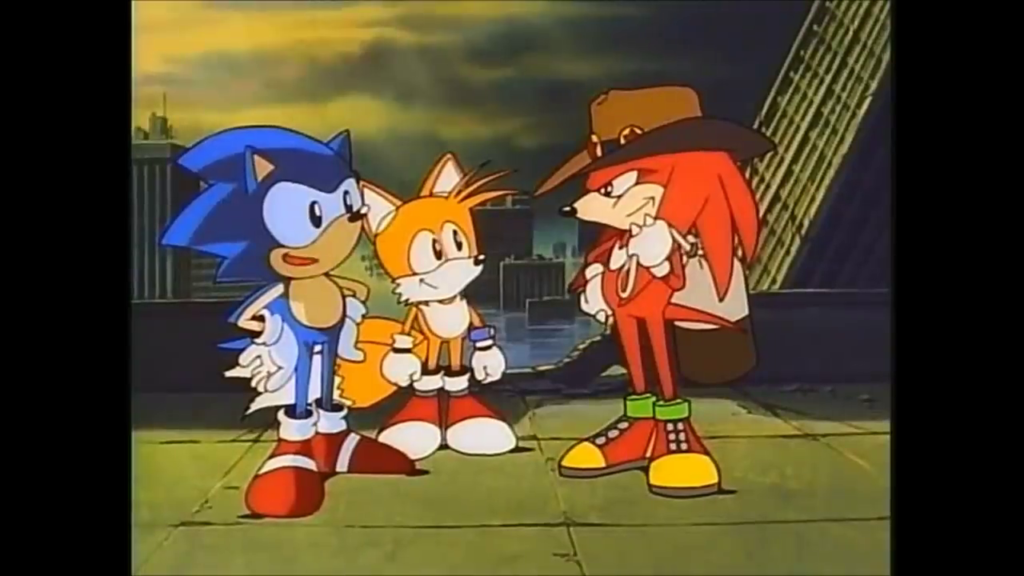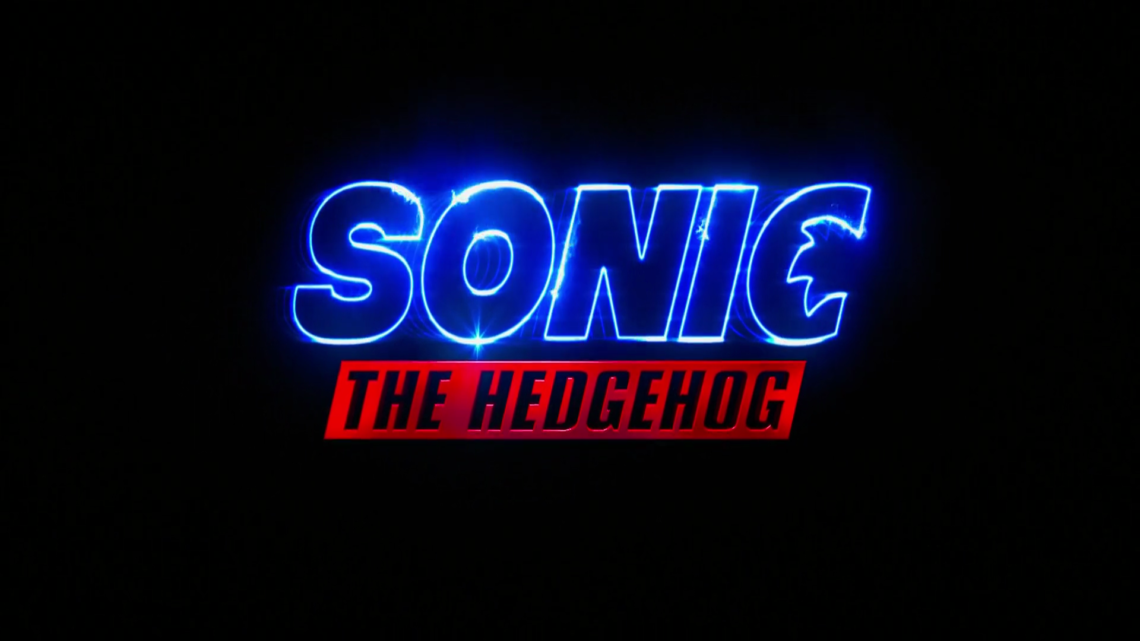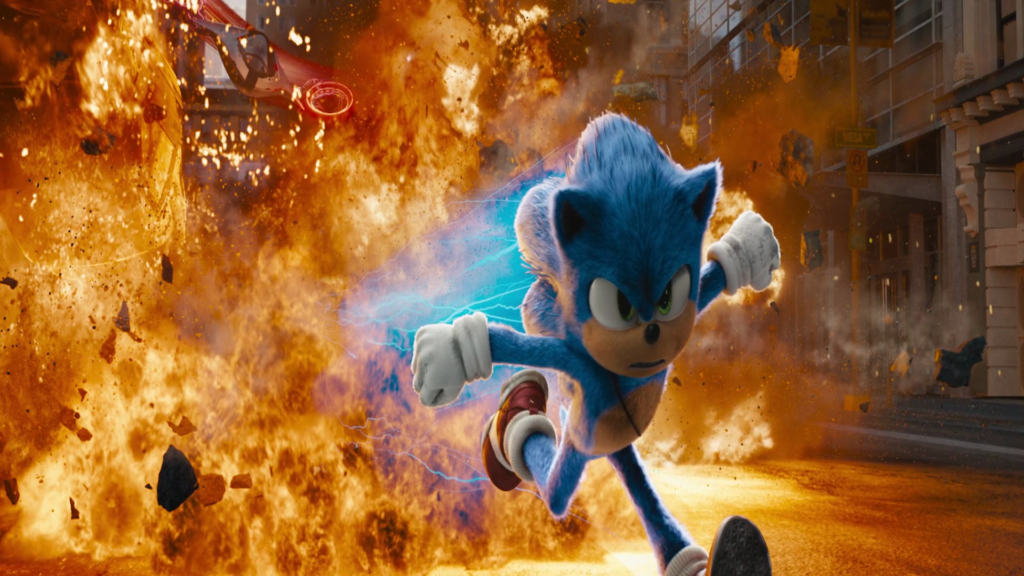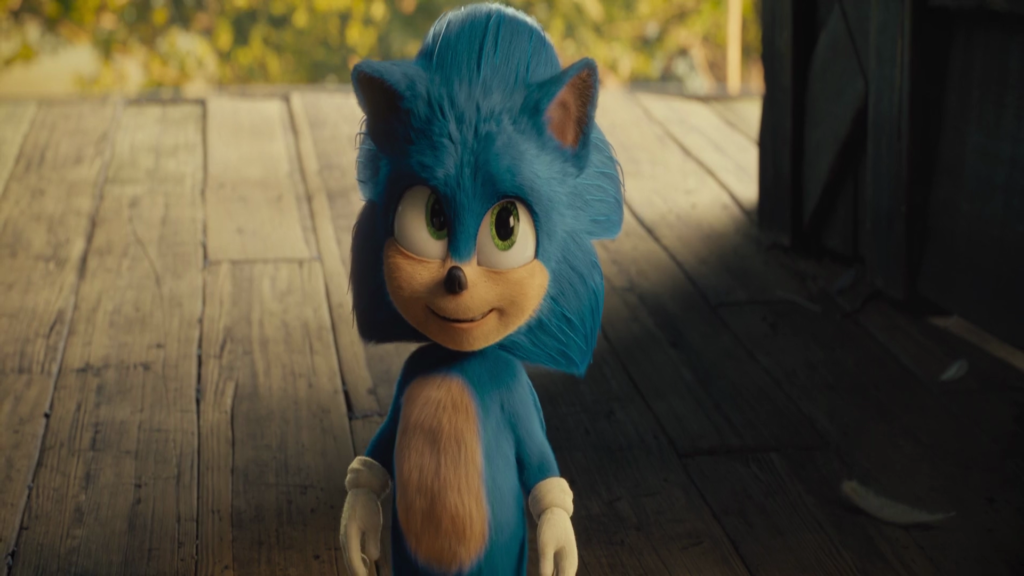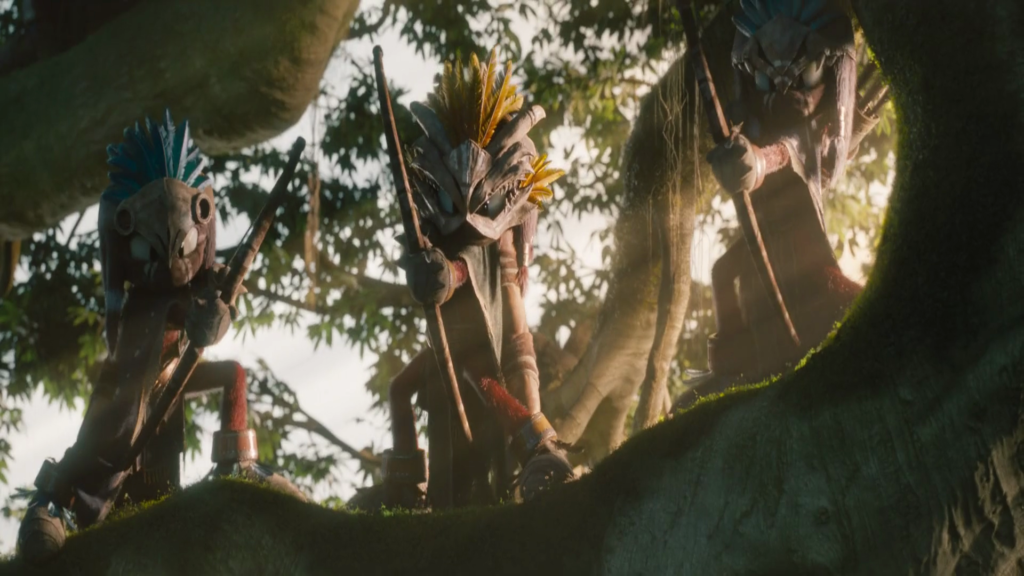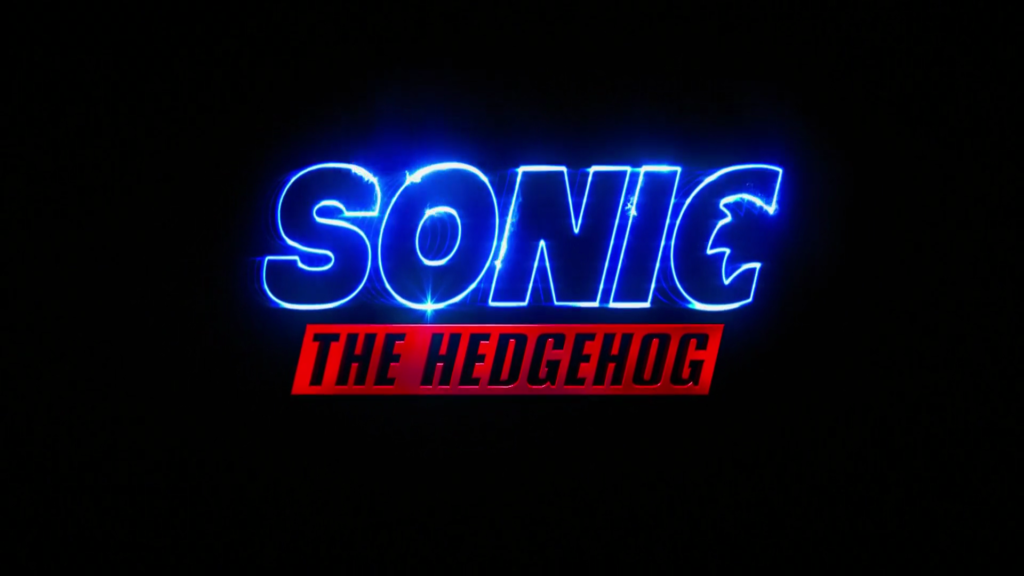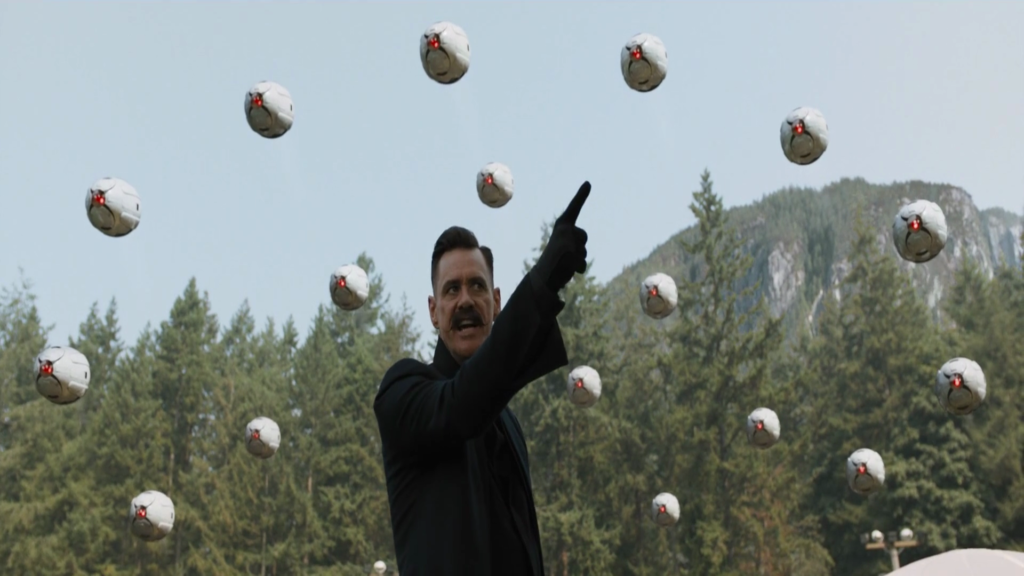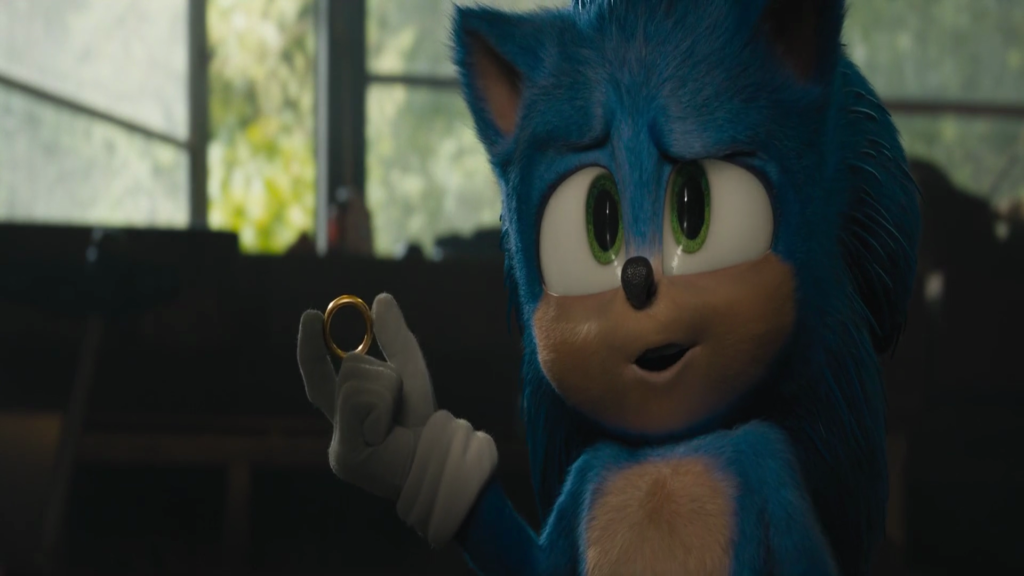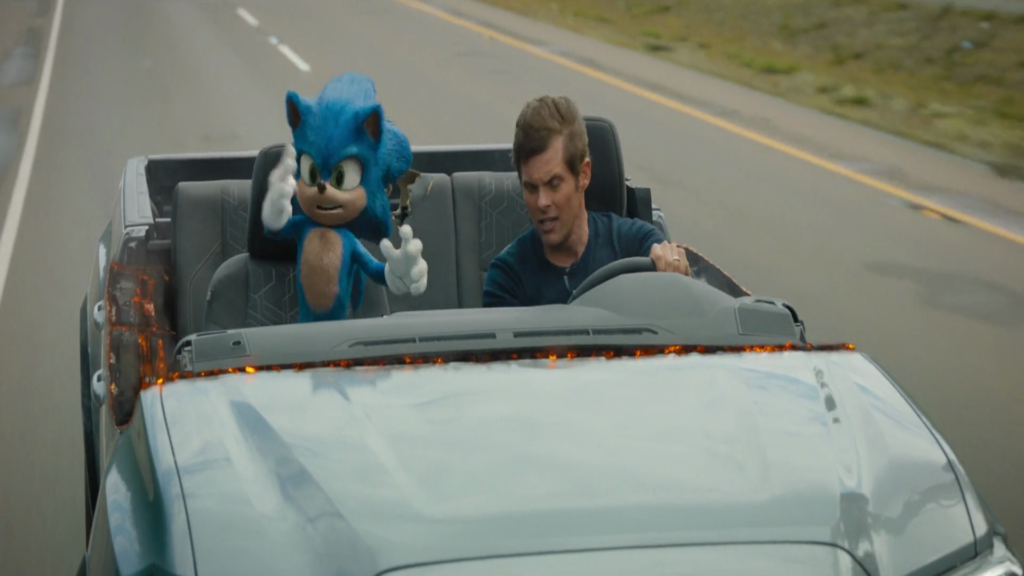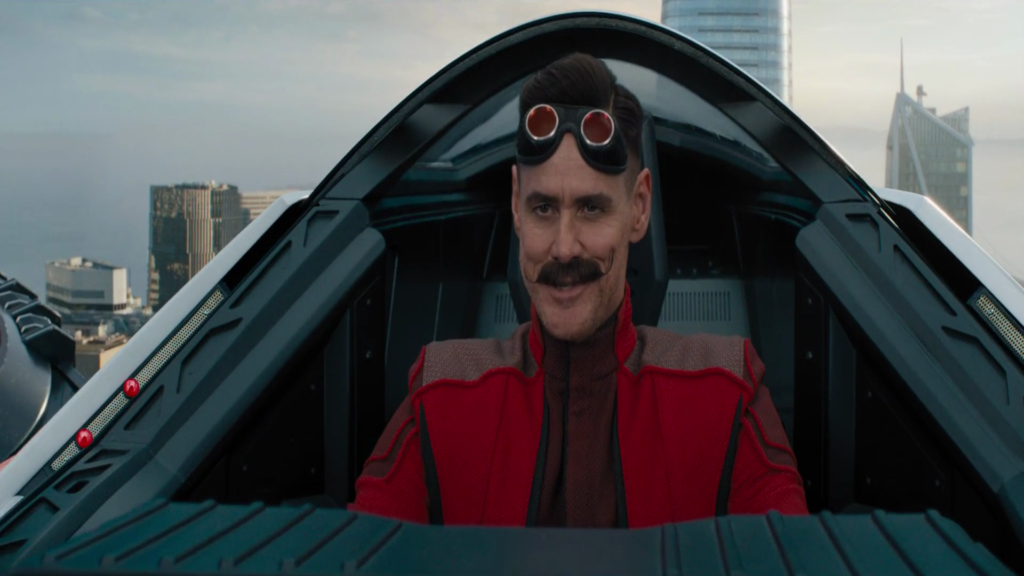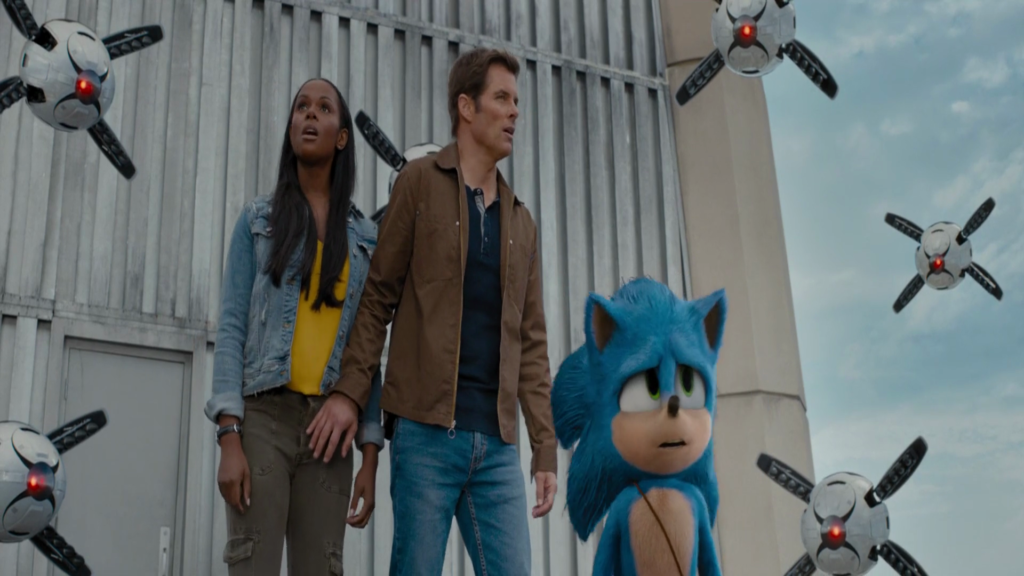-
#404 – The Power God (1925)
The Power God (1925)
Film review #404
Directors: Francis Ford, Ben F. Wilson
SYNOPSIS: Professor Sturgess, with his assistant Jim Thorpe, has invented a machine that can draw infinite power from the air, which will be sure to revolutionise the way energy is produced. However, this invention has drawn the attention of the coal and oil companies, who have agreed that the invention is a threat to their monopolies, and must be destroyed. They hire career criminal Weston Dore to deal with Sturgess, but Dore has other plans to steal the invention for himself and become the new “power God”…
THOUGHTS/ANALYSIS: The Power God is a 1925 movie serial comprised of fifteen chapters, and one of the few serials that has sadly survived from that time. The story opens up with Professor Sturgess and his assistant Jim Thorpe finishing development on a machine described as “the marvel of the radio-electric age,” which can draw power directly from the air, providing a nearly infinite source of energy. This machine has drawn unwanted attention from the traditional energy businesses, who fear the collapse of their industry, hire criminal Weston Dore to get a hold of the machine by any means necessary. When Dore tries to buy the machine from Sturgess with the aim of suppressing it, Sturgess refuses. Dore then has to change plan and has Sturgess killed. With enemies closing in, Thorpe and Strugess’ daughter Aileen have to hide the machine and protect the invention from falling into Dore’s hands, who decides to try and keep the invention for himself to become the new “power God” of the modern world. The story has a familiar setup as with most serials, but this is one of the serials that defined the format for twenty years, and provided a ready-made template for companies like Republic and Universal to pump out similar serials in around a month or so.
At the time it was released, The Power God would have been something many people had not seen before, particularly in the science-fiction genre. Compared to those other serials, The Power God is a strong example of the potential of the format’s storytelling potential. Following Jim asking Professor Sturgess’ approval to marry Aileen and being refused, the two decide to elope and marry in secret. However, a car accident involving her and Dore in another car leads to her losing her memory, and when their rescuers believe Dore to be Aileen’s wife due to the wedding ring they found (which was for Jim), Dore capitalises on this for his schemes and tries to convince Aileen she is his wife while her memory is gone. This is quite a complex situation, and takes up the first few episodes as Jim tries to rescue Aileen and stop her from signing over her Father’s estate to Dore, as well as trying to get her to recover her memory. There’s definitely plenty going on in this story, and each chapter feels a bit different and pushes the story forward, instead of other serials where each chapter is just the foiling of another scheme, a fist fight, and a cliffhanger. The Power God goes through a number of plans and schemes, fleshing them out in depth, and advancing the story in a structured way, as well as introducing new characters that add something new along the way.
The characters themselves are the typical cast of serials: you have the broad-shouldered white male for the lead who does most of the action, a female secondary character who gets captured a lot, a scientist, a criminal villain…they’re all here in some capacity. However, the characters are given plenty of development to make them feel unique. Dore is intent on getting the machine for himself, and his interactions with his calculating wife Carrie give him a bit more of a human dimension. We are also introduced to Carrie’s brother later on, who again changes up the dynamic and keeps things interesting. A mysterious man who aids Thorpe and Aileen from time to time without explaining his motives adds an element of intrigue as to what his role is. He is often just called “the Hindu,” which I’m sure would have been appropriate for the time. He at least is not played by a white actor in ‘blackface,’ but his actor, a native American, does seem to have a bit of makeup on to darken his skin. There are also two black men who are characterised as ‘simple minded,’ which is sadly how every black person on film was depicted in this time. These are certainly problematic, and a product of their time.
The serial is well produced and shot, with plenty of consideration into camera angles and scene-setting. Some of the action scenes, such as on the train near the end, would no doubt taken some effort to pull off. The fight scenes are less well done, and they mostly feel like a chaotic scrap. I don’t think choreography for fight scenes had really been established or developed at the time. The most peculiar aspect of the film for me is the ending: after Dore is stopped and the machine recovered, Aileen and Thorpe realise this machine that will revolutionise how energy is produced will have the consequence of putting thousands of people out of work. In realisation of this, they simply decide to destroy the machine to preserve the status quo. This is a bit of an anti-climax since the viewer will have watched this serial for five hours to see them recover the device, only for it to be willingly destroyed. Also it seems to have the message that invention, science and progress should only be allowed as long as they don’t upset the status quo, or put people in poor working conditions out of a job. The messaging that progress and change is bad does not feel natural, it feels forced and tacked onto the end. It is highly reminiscent of early Soviet cinema where such an ending would be stuck on the end to fit certain propaganda and messaging: the hero would realise his foolishness at independent thought, and would heroically take his place in the system. The example that comes to mind is the Russian film Gold in particular. I wonder if this ending was intentionally made to not upset big business, or they could not figure out any other ending. Either way, it’s not a satisfying payoff, and is rather suspect. Overall though, The Power God is a good serial that has plenty of content, as well as twists and turns that keep things fresh and interesting. The characters are well defined and undergo enough development throughout. There’s some problems around its racial characterisations and the questionable ending, but it certainly provides a template for the format as it was used in the years after it until its demise.
-
#403 – Airwolf (1984)
Airwolf (1984)
Film review #403
Director: Donald Bellisario
SYNOPSIS: A military exercise to showcase a new state-of-the-art helicopter codenamed “Airwolf” takes a disturbing turn when its designer and pilot, Dr. Moffet, goes rogue by destroying the testing facility, and taking Airwolf to Libya. The head of a CIA division named “The Firm” travels to the home of Stringfellow Hawke, a recluse who was a test pilot for Airwolf, with an offer of a million dollars to reclaim the helicopter. String is reluctant to do it, but agrees to it on the condition that The Firm find his brother St. John, who went M.I.A. during the Vietnam war seventeen years ago…
THOUGHTS/ANALYSIS: Airwolf is a 1984 TV movie, which also served as the pilot for the Airwolf TV series. In the opening scene, we see a military training exercise showing off the highly-advanced military helicopter codenamed “Airwolf” to a U.S. senator. The whole scene is really just an excuse to get some action scenes with the helicopter in right from the start, and it certainly delivers, as the helicopter flies faster than the speed of sound, outmanoeuvres missiles and just blows a lot of things up, you get the action you would expect and a good idea of what Airwolf can do right from the outset, and should get viewers hooked right away, with the technical jargon being spliced in with the action which illustrates quite clearly what they’re talking about. At the end of the exercise, the pilot Dr. Moffet, who is also the designer of Airwolf, attacks the testing facility and escapes with Airwolf along with the two co-pilots. The themes of the story are rooted in cold-war military operations and espionage, and as such has a dark tone throughout, amplified by the use of strong language and high body count that gives it much more of a serious feel than contemporary vehicle-based shows such as Knight Rider.
Archangel, The head of an intelligence agency only known as “The Firm,” visits the home of recluse Stringfellow Hawke (yes that is his real name, and yes it is the best name ever), who was a test pilot for Airwolf. Archangel attempts to recruit Hawke for a mission to steal Airwolf back from Moffet, who has joined up with Kaddafi’s forces in Libya. Hawke is reluctant to do so, but agrees to it on the condition that The Firm finds his brother St. John (does anyone in this family have a normal name?), who went missing in Vietnam on a military operation seventeen years ago, where Stringfellow made it out, but his brother did not. A lot of the film focuses on establishing Stringfellow’s character as a solitary, cultured man of few words, but who can also spring into action when necessary. His story is one of loss, not only of his brother, but also their parents who died when he was ten, and also his girlfriend in a car crash. This is played out as Archangel’s assistant Gabriela tries to get close to Hawke, but his coldness to her is a reminder that anyone who gets too close to him dies. Hawke’s character really drives a lot of the scenes, but there’s also action sequences interspersed within them as Moffet is piloting Airwolf to attack a variety of French and American forces, so it keeps giving some more action-oriented scenes to balance out the character development. Backing Hawke up is his friend Dominic Santini, who raised Stringfellow and his brother after their parents died. Dom plays a bit more of a comic relief role, but still a capable ally, and one that doesn’t upset the dark tone that the film goes for.
We don’t get to see Stringfellow in Airwolf until the finale, but as mentioned there’s plenty of action scenes with Moffet as the pilot so you can get a good sense of what Airwolf can do (also good for a TV pilot in that it shows Airwolf in a variety of situations that could be employed over the series). A real helicopter is used for the flight scenes, and the stunts and choreography are all well done, as well as the interior of Airwolf being full of flashy (for the time) gadgets and screens. Moffet himself is clearly unhinged, and though it is never explained why he has gone rogue other than implying something that happened with a project that the Senator at the beginning was involved with, Moffet’s real motivation seems to simply be boredom and enjoys taking risks and blowing people up some light entertainment. Overall, Airwolf has a good mix of action, intrigue and espionage combined with some good character development that is balanced between the different personalities of the characters. The dark tone pushes some boundaries, and gives the story a decent intensity that allows viewers to remain engaged throughout the different elements of the plot. The ending is left rather open, but as a pilot for the TV series, it is meant to be picked up there (and it is). As a stand-alone film though, it is still likeable and entertaining enough to sit through.
-
#402 – The Monster and the Ape (1945)
The Monster and the Ape (1945)
Film review #402
Director: Howard Bretherton
SYNOPSIS: Professor Arnold at the Bainbridge Research Laboratory have completed construction on a revolutionary new robot called the “Metalogen Man” that they believe will be able to accomplish all manual labour. However, after a demonstration to Professor Ernst and three other colleagues, Ernst arranges the deaths of the other three and steals the robot for himself using a trained ape. Ken Morgan, a representative for the company who ordered the robot, teams up with Professor Arnold and his daughter Babs to stop Ernst and recover the robot, before Ernst can find more of the valuable mineral Metalogen and create an army of unstoppable robots…
THOUGHTS/ANALYSIS: The Monster and the Ape is a 1945 movie serial composed of fifteen chapters. The opening chapter sees Professor Arnold give a demonstration at the Bainbridge research Laboratory to Professor Ernst and three other colleagues of “The Metalogen Man”, a human-like robot that will be able to handle all kinds of manual labour. After the demonstration, Professor Ernst arranges the deaths of his colleagues and steals the robot for himself using a giant trained ape named Thor. Ken Morgan, the representative of the company who was going to buy the robot, arrives but finding the robot has been stolen, teams up with Professor Arnold and his daughter Babs to attempt to recover the robot. The story follows Morgan, Arnold and Babs as they try to thwart Ernst’s various schemes to unearth more of the valuable mineral Metalogen to create more robots. The story follows the usual serial format rules, with a lot of back-and-forth between the heroes and villains as the robot and it’s control unit are stolen and re-stolen throughout the fifteen chapters. There are less action scenes and very few chase scenes in vehicles which are typically a staple of the format. The cliffhangers are fairly varied and contain some elaborate traps, but you know how they’re going to end up most of the time.
The “monster” and the “ape” of the title are the robot and Thor. The robot is controlled by a control unit and looks fairly strong and menacing, with its light up eyes and bulky body. Thor is brought out of the zoo by its trainer to carry out the orders of Professor Ernst, and handles jobs such as carrying the robot, which is too heavy for any person to lift. Thor himself is played by Hollywood stuntman Ray Corrigan, who owned the ape-suit and would rent himself and the suit out to movies that required it, and he does a convincing job with it. However, we don’t see nearly enough of the two of them, and most of the action doesn’t involve them. The worst part is we never get to see the two of them fight one another, which is a hugely missed opportunity (and being shown on the posters). Thor dies by being shot in the thirteenth chapter, which is a hugely underwhelming end for the titular character. The rest of the characters follow the usual format, with the lead male doing the action and fight scenes, the sole female character who acts as an assistant or secretary, and the ‘good’ scientist who helps them. There’s also Flash, who plays a comic relief character (I’m not sure what his role in the laboratory actually is), and is played by a non-white actor, which is very rare in 1945. He is played as having a low intelligence and being a coward, which results in him being very much a racist caricature, and is quite problematic to say the least. Professor Ernst as the villain has plenty of schemes, and while he has no special powers, inventions, nor is he hidden behind a disguise like many serial villains, he still has quite an aura of menace about him.
Overall, The Monster and the Ape is a typical serial adventure with few stand outs. It has some elaborate cliffhangers and scenarios that replace the well-worn vehicle chases of other serials, but it’s titular “monsters” are vastly under-utilised, and you can’t help feel a little disappointed with the potential of a robot versus an ape, and what we actually get, which is the sparse use of both and the lack of any confrontation between them.
-
#401 – Sonic the Hedgehog (1996)
Sonic the Hedgehog (1996)
Film review #401
Director: Kazunori Ikegami
SYNOPSIS: Sonic the Hedgehog is visited with an urgent message from the President of Planet Freedom. When he goes to visit him, Sonic finds none other than his arch nemesis Dr. Robotnik, who actually wants Sonic’s help in destroying Metal Robotnik, a robot who has taken over the city of Robotropolis, where the generator for the city is about to go critical and endanger the whole planet unless Sonic can go and defeat Metal Robotnik and shut the generator down. Meanwhile, Robotnik has his own schemes at work, including one for a certain “Hyper Metal Sonic”…
THOUGHTS/ANALYSIS: Sonic the Hedgehog is a 1997 animated film made from a two-part Original Video Animation (commonly known as OVA) released in Japan. The story opens up with Sonic and Tails relaxing on a beach when they are visited by an owl who is only referred to as “the old man.” He tells them that the President of Planet Freedom wishes to see them urgently. When they arrive, Sonic and Tails find their nemesis Dr. Robotnik there, who actually wants their help. Robotnik has been forced out of his home of Robotropolis by Metal Robotnik, and the generator in the city will overload and destroy the planet soon if it is not shut down. Sonic and Tails agree to do it, and travel to Robotropolis. The story throws you into the middle of this world with little explanation of what is going on (with the brief exception of the world being divided between an upper world of floating islands, and a lower world of darkness where Robotropolis is). That’s not necessary a problem though, as a blue hedgehog that runs really fast doesn’t need too much of a backstory or exposition to engage the viewer. The characters are recognisable and act more or less how you would expect them too, so you get what you would want in that respect in a movie about the video game character.
Sonic and Tails arrive in the lower world of darkness and encounter Metal Robotnik, and battle takes place in the ruins of what seems to be New York City, suggesting planet Freedom is actually Earth in the distant future. The action is fast-paced and delivers what you’d expect, with lots of running and jumping all over the place. Sonic and Tails are saved by Knuckles, who again is more or less the character you would expect him to be. The second part of the film sees Sonic facing off against “Hyper Metal Sonic,” a robot version of Sonic created by Robotnik. There’s not too much to say about this part of the movie, as it is more or less a straight-up fight between Sonic and Metal Sonic, with the other characters sometimes interjecting. Again, this isn’t so bad in terms of the characters and world themselves don’t need to have a comprehensive story mapped out for you. I think it more or less delivers what it needs to, but since it clocks in at under an hour, it feels like there’s a lot more that could have been done.
As mentioned, this movie was composed of a two-part Japanese animation, and re-edited into a single movie for an English release. The dubbing industry at the time was not particularly great, but the English voices are all pretty terrible. Sonic sounds very nasally, but has a bit of the attitude you would expect him to. Tails sounds awful and always sounds like he has a cold. Robotnik’s voice is fairly decent, and sounds fairly similar to the voice he has in the video games that preceded this movie. The animation as well often feels cheap and fragmentary with a lack of frames making the animation feel rough, which destroys any sense of speed and fluidity that the movie really needs to show off Sonic’s speed. A lot of the expressions of the characters and their style or reactions are those that are typical of Japanese animation, and don’t really translate too well. This is again an issue around the early dubbing industry still finding its feet with how to approach the Japanese animation style.
Overall, Sonic the Hedgehog is a brief foray into the world of the titular character. It doesn’t establish any deep story elements or incorporate any of the stories from the games, but relies on the recognisable characters doing what you would expect them to, and leaves the detail of the world to the imagination. The quality of animation and voices really hampers the feel of the film at points, and the style of animation is awkwardly interpreted at times, but there’s some decent action scenes, and portrays the characters in a way that one would more or less expect.
-
#400 – Sonic the Hedgehog (2020)
Sonic the Hedgehog (2020)
Film review #400
Director: Jeff Fowler
SYNOPSIS: Sonic, a hedgehog who was borne with super speed, is chased from his homeworld, and transports to Earth where he must hide by himself so the same thing does not happen again, and someone else attempts to capture him for his powers. Spending ten years hiding on the outskirts of the rural town of Green Hills, he has grown attached to some of the locals without them knowing of his presence. Police officer Tom Wachowski and his wife Maddie are two people has grown particularly fond of. When an overuse of Sonic’s powers triggers a large scale power outage, the government sends in their specialist Dr. Robotnik to investigate the cause, and finds that Sonic’s speed could be a source of infinite power for his robots, if he can just gets his hands on him…
THOUGHTS/ANALYSIS: Sonic the Hedgehog is a 2020 film based on the popular video game character of the same name. The story opens with some backstory, as Sonic tells us about his home on another planet, which he had to flee because there were those who wanted to capture him for his powers to run incredibly fast. He flees to Earth under the instruction to trust no one. Ten years later, he is living in a hideout in the woods near a rural town called Green Hills. Here, he keeps an eye on the locals, but never shows himself to them. When his powers inadvertently caused a huge power outage and the government tasks scientist Dr. Robotnik with investigating, Sonic has the local sheriff Tom Wachowski help him get to San Francisco to gets his rings back which can transport him to a new world where he will be safe. The film’s story is very straightforward, with it being a typical ‘fish out of water’ plot and Sonic getting used to being around humans. I suppose there’s a bit of a twist with Sonic not trying to find his way home, but to escape his new home, but it doesn’t affect the feeling that the plot is something you’ve seen plenty of times before. Nevertheless, the themes are consistent, and tie up with Tom’s plot of wanting to move away from his home to San Francisco to do some ‘real’ police work there. The focus really isn’t on the story as this primarily aimed at children, and the fast one-liners and light-hearted back-and-forths between characters keep things going at a smooth pace so as to keep attention. In this respect, the film succeeds rather well, even if it fails to create anything innovative or deep in it’s plot. That said, there’s a lot of references to different aspects of the franchise’s history that more devoted fans will appreciate, so the film tries to saddle all audiences along for the ride.
The story primarily serves as an origin story for Sonic, so it doesn’t really get into the content that the video game franchise has made over the past thirty years. Characters like Sonic don’t even need an origin story: he is a blue hedgehog who runs really fast and fights robots created by a scientist named Robotnik. Sonic is typically characterised as having an “attitude” and cool personality (in the nineties anyway), and a carefree approach to life. The Sonic in this film doesn’t really fit that character, as he is a little more naive and troubled, but again it is an origin story featuring a younger Sonic than we’re used to, so it’s not a real issue (in the games he is typically listed as being sixteen years old, here is is probably around ten or eleven, but that’s getting a bit too technical). Tom Wachowski is a fairly standard character in these types of films, but is nevertheless likeable, and has his own plot that gives him a purpose for being on screen. He played almost the exact same character in the film Hop, the only real difference being it was the Easter Bunny he was dealing with instead of a blue hedgehog, so at least he has some experience in this kind of role. However, the stand-out performance has to go to Jim Carrey for his portrayal of genius (and mad) scientist Dr. Robotnik. He is definitely not the first person you would think of in casting Robotnik, but he definitely makes it work: he is mostly portraying him as he did for most of his roles in the nineties, but his energy really brings life into the film, and his expressive acting is hugely entertaining, even if it is just Jim Carrey being Jim Carrey. Despite this, he also manages to give the role a bit of a menacing feel, and portrays the character as a genius who is undone by his own hubris (as described by Carrey himself) gives a surprising amount of depth to his role. It would have been nice to have some more direct Sonic/Robotnik interaction though.
The first trailer for this film was met with near universal criticism, mostly because of Sonic’s design, which made him look more human with larger arms and legs and smaller eyes, but the combination of Sonic, who very much a mickey-mouse character, combined with human proportions was a horrific combination, and the backlash was so great that his CG model was completely re-designed, forcing the film’s delay. The re-done Sonic managed to achieve the impossible and was welcomed by almost everyone: such a 180-turn-about is almost unheard of (particularly in the Sonic fandom). While Sonic still looks like a CG animation and never looks truly immersed in the real-world setting, his face and body are expressive and fluid, while still being colourful and cartoony enough to retain that consistency with the character people know. I suppose a minor issue I have is that Sonic’s arms are not supposed to be blue, but that really is a personal and minor grievance.
Overall, Sonic the Hedgehog feels like a 90′s film for a 90′s character. While the iconic characters are given a strong presence on film, the story is devoid of any real originality, and moves scene-to-scene rather awkwardly. Despite this, the central themes are consistent and resonate with most of the cast, and the story is fast paced and fun so as to not get boring and keep the appeal of it’s younger target audience. The characters are likeable and have definite presence, aided by fun and quick dialogue, but don’t particularly develop in a unique manner. Given the track record of video game movies being typically disasters, Sonic the Hedgehog avoids that fate for the most part, and sets up some interesting story elements that could form the basis of sequels to develop the characters and worlds in a promising direction.


